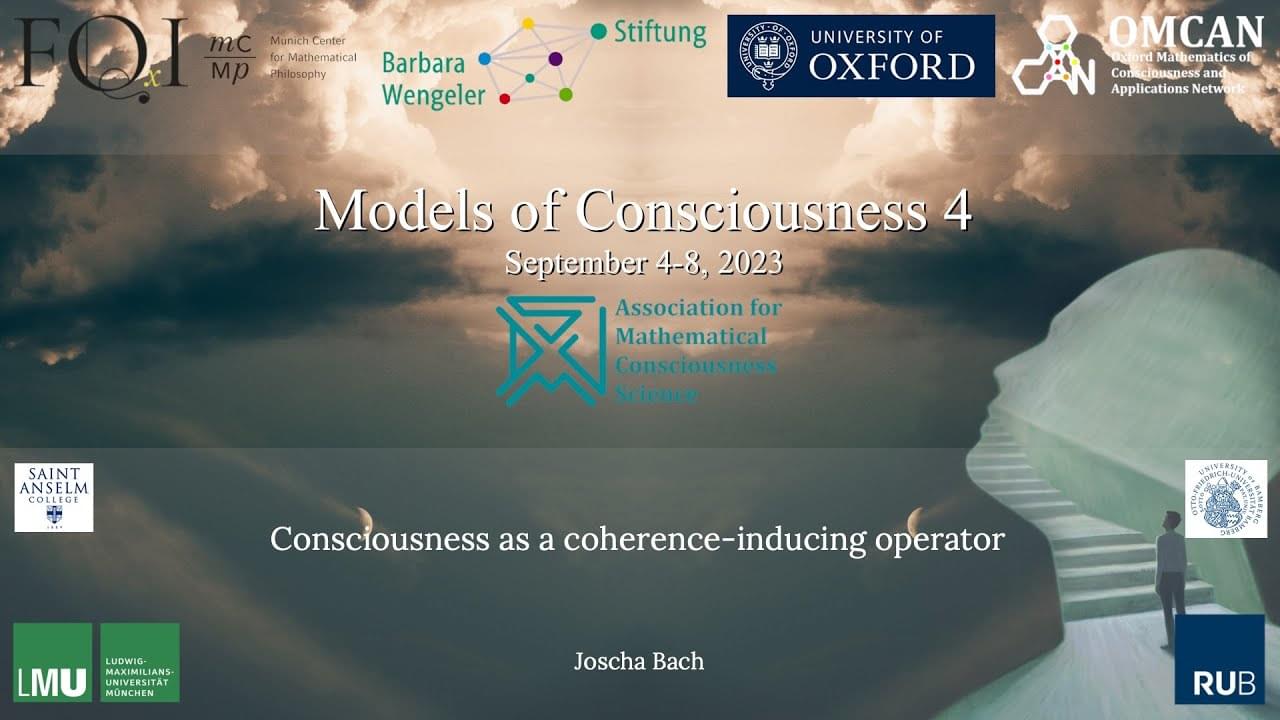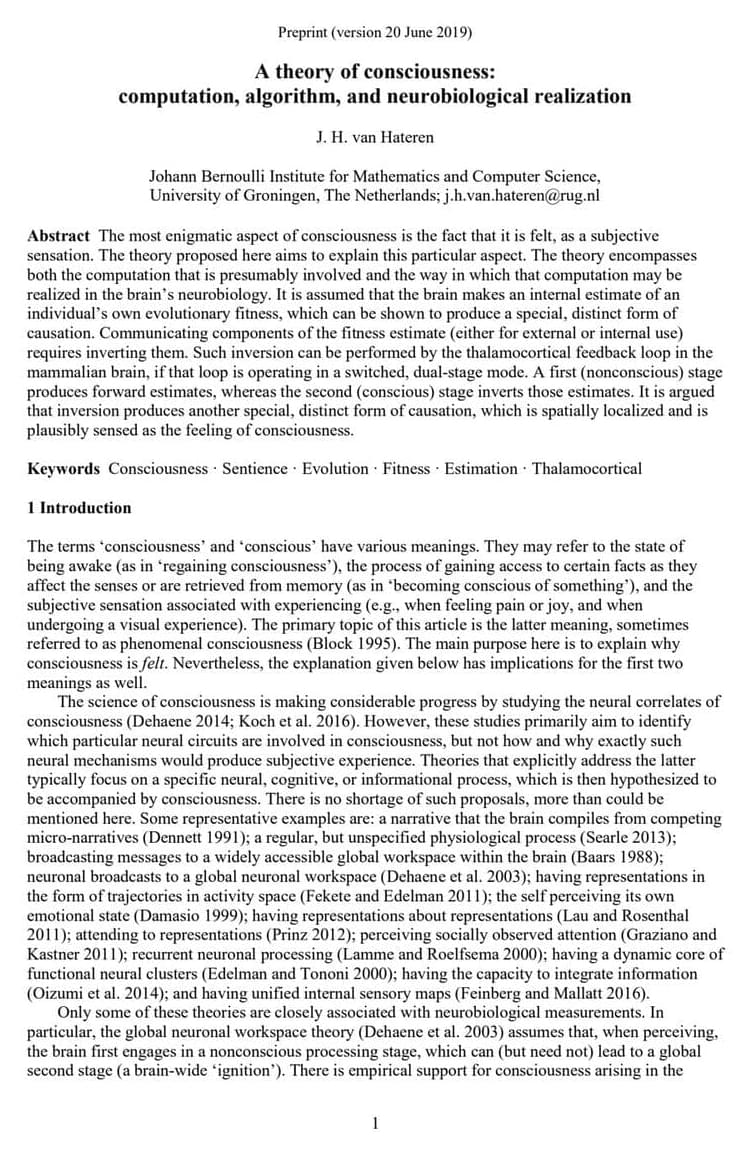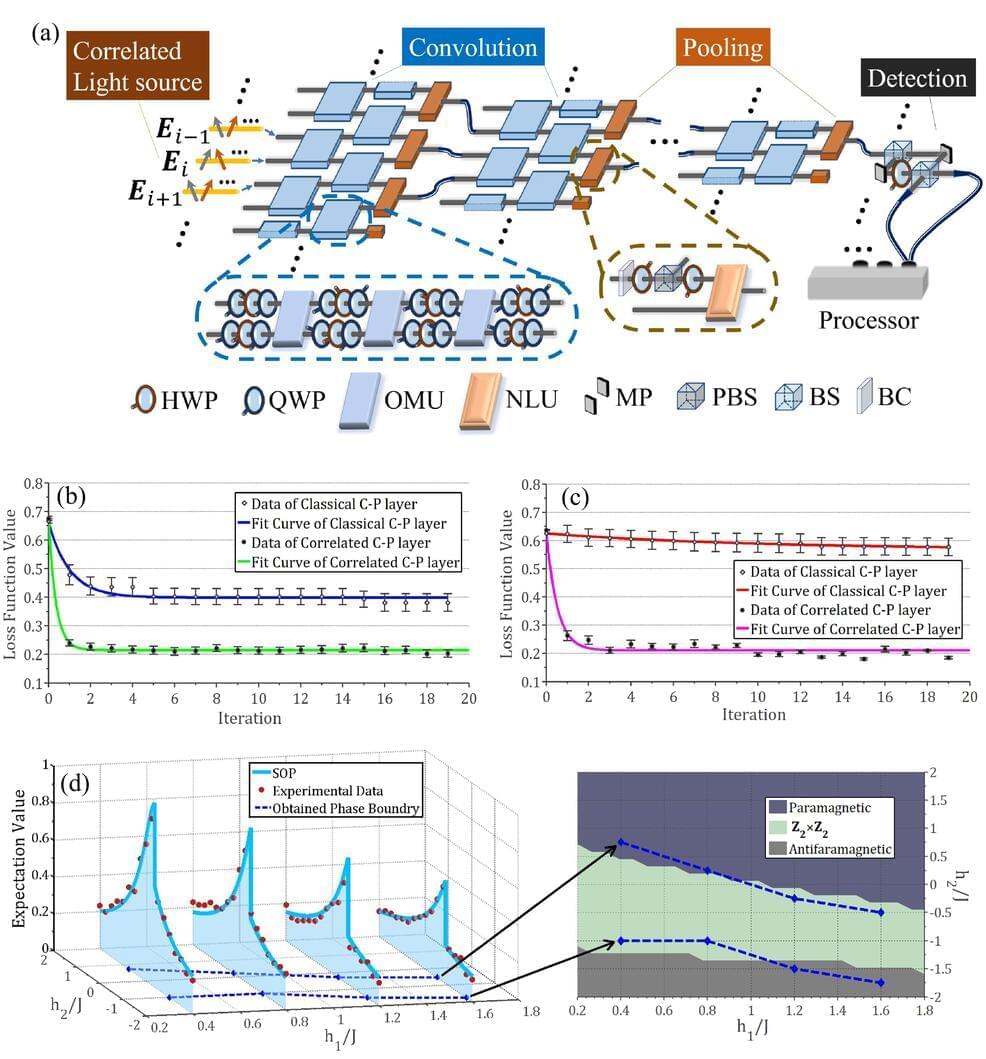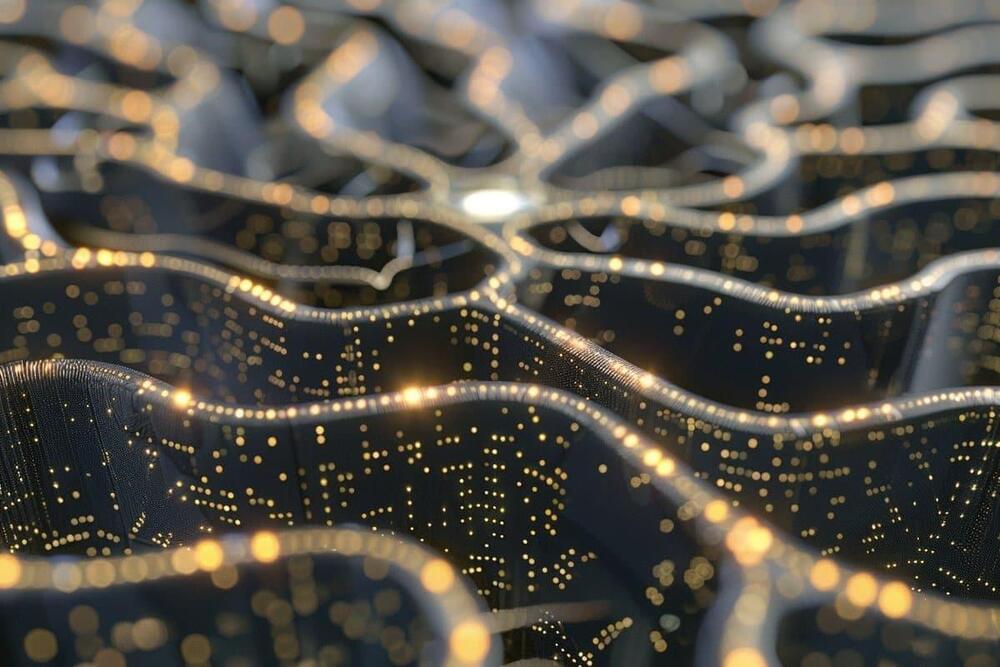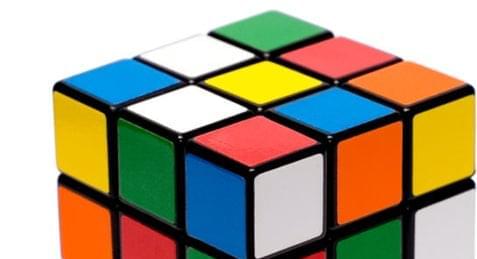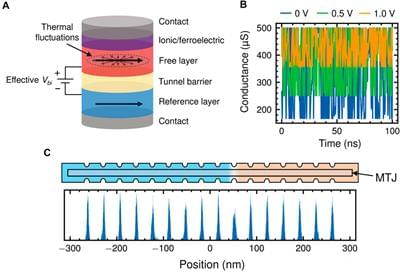Apr 4, 2024
Joscha Bach — Consciousness as a coherence-inducing operator
Posted by Dan Breeden in categories: biological, computing, information science, law, neuroscience
A theory of consciousness should capture its phenomenology, characterize its ontological status and extent, explain its causal structure and genesis, and describe its function. Here, I advance the notion that consciousness is best understood as an operator, in the sense of a physically implemented transition function that is acting on a representational substrate and controls its temporal evolution, and as such has no identity as an object or thing, but (like software running on a digital computer) it can be characterized as a law. Starting from the observation that biological information processing in multicellular substrates is based on self organization, I explore the conjecture that the functionality of consciousness represents the simplest algorithm that is discoverable by such substrates, and can impose function approximation via increasing representational coherence. I describe some properties of this operator, both with the goal of recovering the phenomenology of consciousness, and to get closer to a specification that would allow recreating it in computational simulations.
